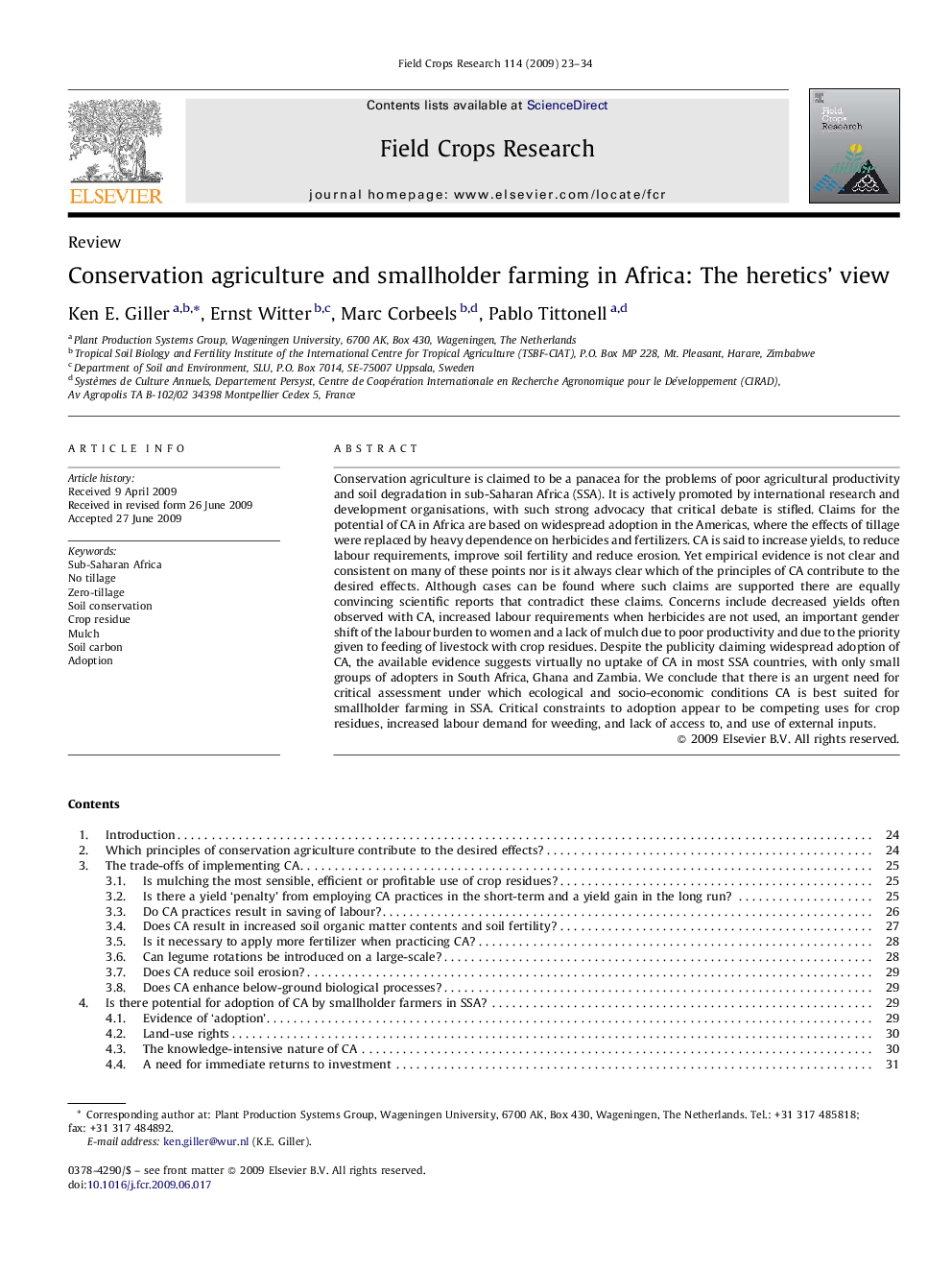| Article ID | Journal | Published Year | Pages | File Type |
|---|---|---|---|---|
| 4511161 | Field Crops Research | 2009 | 12 Pages |
Conservation agriculture is claimed to be a panacea for the problems of poor agricultural productivity and soil degradation in sub-Saharan Africa (SSA). It is actively promoted by international research and development organisations, with such strong advocacy that critical debate is stifled. Claims for the potential of CA in Africa are based on widespread adoption in the Americas, where the effects of tillage were replaced by heavy dependence on herbicides and fertilizers. CA is said to increase yields, to reduce labour requirements, improve soil fertility and reduce erosion. Yet empirical evidence is not clear and consistent on many of these points nor is it always clear which of the principles of CA contribute to the desired effects. Although cases can be found where such claims are supported there are equally convincing scientific reports that contradict these claims. Concerns include decreased yields often observed with CA, increased labour requirements when herbicides are not used, an important gender shift of the labour burden to women and a lack of mulch due to poor productivity and due to the priority given to feeding of livestock with crop residues. Despite the publicity claiming widespread adoption of CA, the available evidence suggests virtually no uptake of CA in most SSA countries, with only small groups of adopters in South Africa, Ghana and Zambia. We conclude that there is an urgent need for critical assessment under which ecological and socio-economic conditions CA is best suited for smallholder farming in SSA. Critical constraints to adoption appear to be competing uses for crop residues, increased labour demand for weeding, and lack of access to, and use of external inputs.
